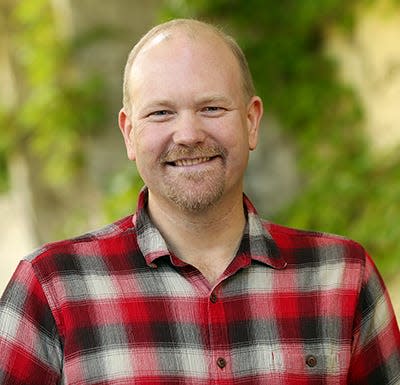A defining question of the 21st century

Fifty years ago overpopulation was a major source of concern around the world. Humanity was growing so rapidly, warned experts, that we’d soon outstrip the carrying capacity of the planet, run out of food, and face collapse. Stanford biologist Paul Ehrlich became a media celebrity after his book "The Population Bomb" was published in 1968, and for years thereafter the topic was central to debates about the environment, the global food supply, and our collective future. And then somewhat suddenly, it wasn’t.
An expanding food supply and falling birthrates in many countries combined to make the worst predictions of the 1970s the stuff of fiction, such as in the 1973 movie “Soylent Green” where the food supply was, shall we say, of human origin. While the total population did grow rapidly, from 2.5 billion in 1950 to over 8 billion now, the rate of increase slowed significantly starting in the mid-1960s and is now less than half what it was at its peak.
Recent headlines are now reporting on a predicted population bust — projections for late in this century that could see the human population shrink to perhaps half of what was once expected, possibly as low as 6 billion in 2100 rather than the 11-12 billion previously anticipated. The prospect of slowed growth is at odds with basic assumptions about the global economy, which are predicated on ever-increasing GDPs and economic models driven by mass consumption and cheap labor. With fewer workers and fewer consumers in the future the global economy can only shrink, a notion that puts chills into the hearts of some observers. But would a gradual decline in population really be all that bad?
Today the chief source of concern over our collective future is not the food supply, but the ability of the atmosphere to absorb the greenhouse gasses that modern societies emit. Our reliance on fossil fuels is changing the planet in increasingly unpredictable ways, impacting precipitation patterns, growing seasons, migration routes, sea level, and of course temperatures in ways that may threaten large segments of the human population within our lifetimes.
In his book, "The Carbon Footprint of Everything," author Mike Berners-Lee explains that a sustainable amount of emissions per person is around five tons CO2 equivalent per year as a global average. By his numbers the average American is responsible for about 21 tons per year, over four times our “share” of the global carbon budget. That needs to come down, while the energy footprints of many in developing countries equitably should go up so their standards of living can be improved.
To make room to increase the carbon footprints of the large segment of humanity that needs more resources, the impacts of the global wealthy — especially North Americans and Western Europeans –will have to decrease. But if overall population growth slows to the point of reversal there will be some additional wiggle room, more “carbon capacity” to go around to help the world’s poorest improve their living conditions while ameliorating perhaps some of the most painful impacts on the rest of us as we strive toward a climate-stable future.
Reversing population growth globally would potentially offer improved quality of life for a smaller number of people with more resources to share per capita. That could happen sustainably, without such egregious impacts on the earth as we expect under the existing assumption that constant growth is the only possible path. Population decline needn’t be legislated, mandated, or even encouraged — it is simply happening by choice, at least partially as a function of empowering women economically, socially, and politically to make decisions in their lives.
We can see this freedom of choice in action around the world today: the global fertility rate has decreased from 4.7 children per woman on average in 1950 to 2.4 in 2022. Many developed countries would be shrinking if not for immigration, including South Korea, Spain, Italy, and Singapore. The United States too is now at a fertility rate below that required for replacement of the adult population.
Whether the population bust is good or bad for the world will be a defining question of the 21st century, more so than the population bomb ever was.
This is the opinion of Times Writers Group member Derek Larson. He teaches history and environmental studies at The College of St. Benedict and St. John’s University. His column is published the first Sunday of the month. He welcomes your comments at twg@anderson-larson.net.
This article originally appeared on South Bend Tribune: We've gone from overpopulation concerns to a predicted population bust
